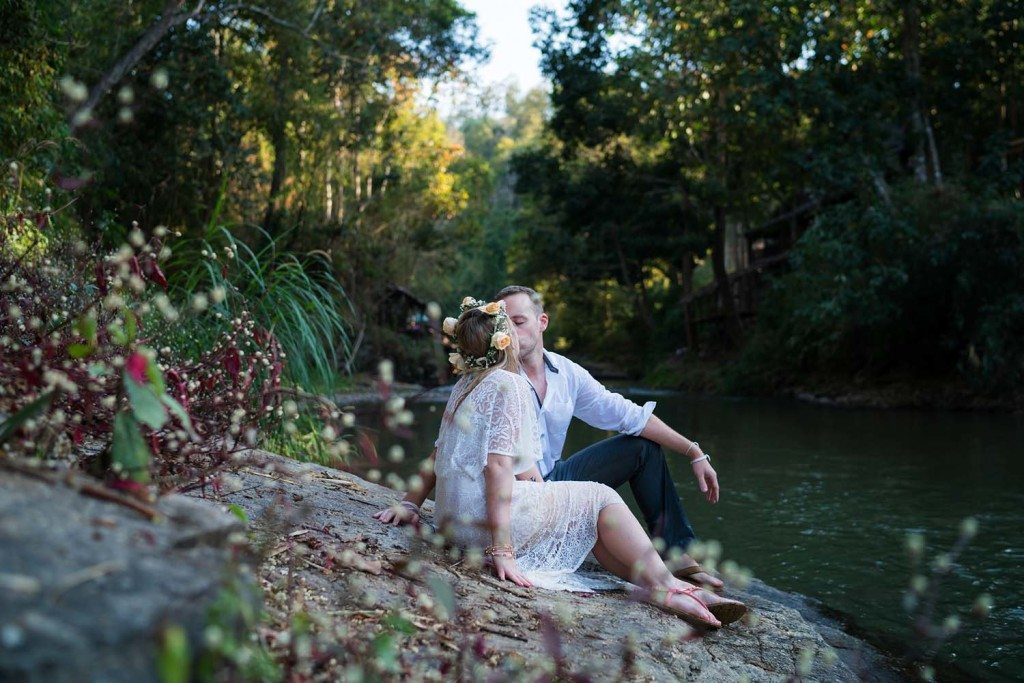
I specialise in elephant photography. I am a professional photographer often engaged for weddings, portraits and photo tours. One of my most popular photography experiences is to take people to visit an eco elephant resort. Elephant tourism is under the spotlight and rightly so. Some people have criticised my photos of people riding elephants. I feel sad about this. I have read many articles about elephant tourism. Many tourists I have spoken to are somewhat ignorant of the facts to say the least. There is a lot of misinformation on the web. I am determined to be fully informed and up to date on the plight of these wonderful creatures. I wouldn’t try to benefit from an animal’s maltreatment under any circumstances. Certainly not with my elephant photography. For sure the experience of elephant rides in Chiang Mai varies immensely depending on the camp.
I made my home in Chiang Mai and I am a professional international photographer. I love photography, I love people and I love elephants. When creating my specialist elephant portraits I will only ever work with organisations that meet the right ethical standards for me to feel happy.
As a photographer in Thailand you need to be aware of the facts about elephants.
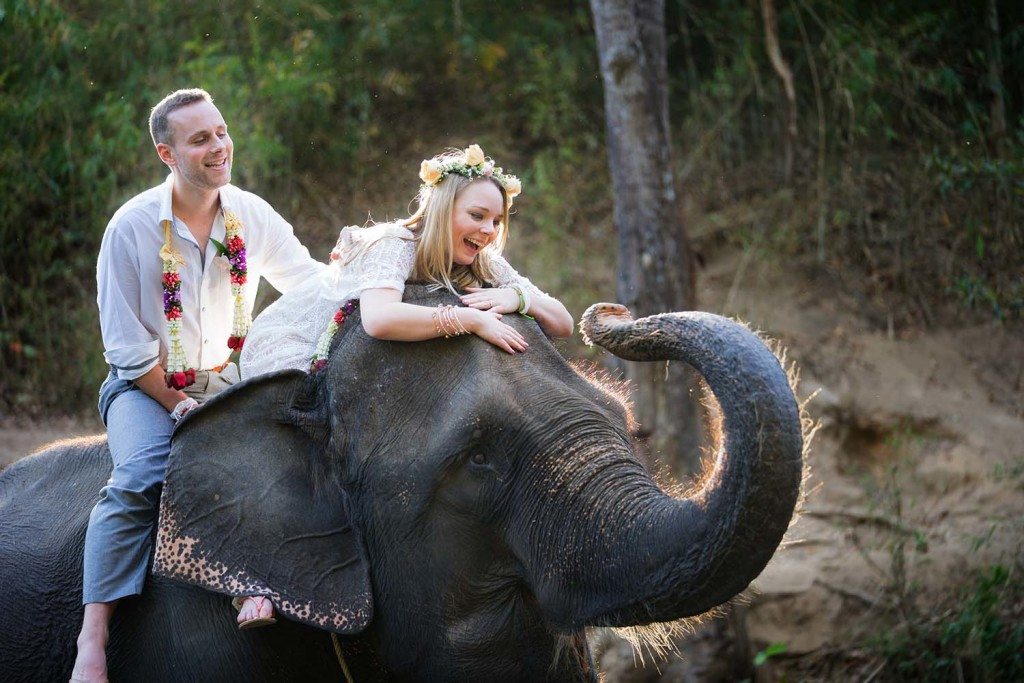
A few facts before we talk elephant photography
I often hear that “all elephants should be set free and live in the wild” – I totally agree that if the world was perfect that would be best, however, that is an impossible dream. In the last 70-80 years the natural habitat for elephants has disappeared, first through logging and then through agriculture, industrialisation and tourism. Now only around 15% of elephant suitable habitat remains. As a photographer in Chiang Mai Thailand I have come into contact with many elephant tourist attractions as well as elephant foundations. Chiang Mai elephants face the same predicament as for the rest of the country.
F.A.E. – Friends of The Asian Elephant
I had the pleasure of using my professional photography skills as a volunteer for Naka Elephant Foundation . It was a privilege to take photographs at the Friends of The Asian Elephant Foundation in Lampang. I have attended talks and meetings with some of the leading authorities on the plight of the Asian elephants.
If you are a photographer in Thailand amazing scenery and beautiful elephants are an incredible combination. If you have a chance to practice elephant photography I recommend it as long as you are working with an ethical camp or organisation.
Logging Was Banned in 1989
Since logging was outlawed in 1989 the only legal way an elephant owner can make money to support his family and his workers is through tourism.
There are approximately 3,400 elephants in captivity in the whole of Thailand with a large concentration in the North of the Kingdom. A similar amount of elephants remain in the wild and can be found in various national parks around the kingdom. The areas are not large enough to sustain all the captive elephants were they to be released. Human Elephant Conflict is a real issue.
Human Elephant Conflict and The Use of Chains
If you are a farmer the last thing you want is for wild elephants to be invading your land and decimating your crops. As a note this is why chains are employed in elephant camps. Without large and extremely strong walls, they are an effective way of making sure the elephants do not wonder off and cause havoc and it stops them from coming to harm. There are perhaps around 2,000 Chiang Mai elephants in camps. Human Elephant Conflict is a genuine problem.
A fully grown elephant eats approximately 250kg of food each and every day! That is 10% of the bodyweight so, a fully grown elephant weighs around 2,500kg. The running cost of 1 elephant including food, veterinary expenses and staff costs run to around $18,000. per year.
Mahouts
The profession of Mahout is many centuries old. In the past to be a mahout was a position of honour. These days it is so often a very low paid position given to stateless refugees. They can be exploited by unscrupulous camp and sanctuary owners who feel that because their employees have no Thai papers they can pay them below minimum wage. Being a mahout is a dangerous job and one where proper training is required.
Why Mahouts Use Bull Hooks
You will still see mahouts carrying bull hooks. They look like cruel instruments of torture. They are actually a necessary tool, firstly to extend the mahout’s reach and secondly to regain control of an elephant should it get spooked or become enraged. In a good camp you will note that the mahouts carry the hook and may gently use them to tug on the ear of the elephant but they never hit or poke the elephant with force.
Please note that in facilities that say they do not use bull hooks the mahouts will almost certainly be carrying some form of nail inside their pocket.This is to use behind an elephants ear should it be necessary to control it. An out of control elephant is a very frightening thing to witness!
It is a beautiful thing to behold when you see an experienced mahout and their elephant working together. There is mutual respect and they work as one. Maybe you will be lucky enough to see them playing together too when work is done. There is genuine love between them.
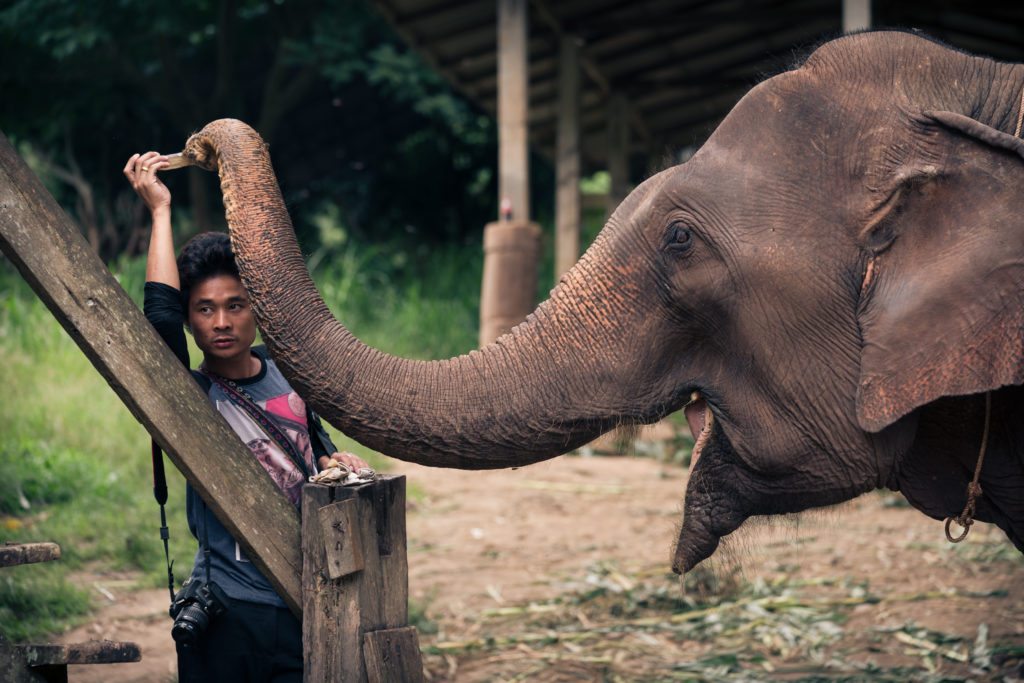
IMPORTANT
If you see a mahout hitting and abusing an elephant make sure you report what you have seen to the camp manager or your tour operator. There is an active program of education taking place to support the good camps and to re-educate the bad ones.
In the past a device known as a “Crush” was used to keep a young elephant in a restricted space to enable it to be “broken” so that it would be controllable for work. Thankfully through re-education programs this device is becoming a thing of the past. Now the informed camps use a system of positive re-enforcement training which involves no cruelty to train the young elephant.
Elephant Sanctuary
The word sanctuary has no legal status in Thailand. Not all sanctuaries or elephant parks are what they purport to be. Believe what you see not what they say.
Elephants are similar to humans – not all elephants get along together even within a family, let alone when “rescued” elephants are put together. This can be dangerous to the elephants who may attack each other and also to the tourists visiting them as well as the mahouts who have to look after them.
The weight of an adult human in comparison to the weight of an elephant and in comparison to the same ratio of human and horse is a tiny fraction. The balance of the elephant’s strength is in its front legs, therefore we can only conclude that an elephant really feels very little strain when carrying you upon its back, bareback or even in a well secured howdah.
A howdah is not necessarily uncomfortable for an elephant as long as care is taken when securing it on the elephant’s back in order that it does not chafe and rub.
An elephant capable of pulling or carrying a teak tree of perhaps a 500kg or more has immense strength.
A little background on my early experiences of elephants
A few years ago as professional photographer living in Chiang Mai Thailand I was invited by Alexa Pham of Chai Lai Orchid Eco Resort. I was to be the wedding photographer to a young American couple’s wedding blessings. This would take place in a little forest Wat or as Westerners say, temple, located way out from the city in the Mae Wang area in a place known as Mae Sapok. This would be my first experience of elephant photography.
Elephant playing in the river
Well, there was nothing to worry about here as I have photographed many, many weddings. Having a fair knowledge of Buddhism I knew well what to expect at the ceremony. The conversation went on “and after the ceremony the couple are going to be with an elephant and they will play with it in the river”. Ah! I have been coming to Thailand for nearly 20 years and have actually lived in Chiang Mai for over 5 years. That said, my experience with elephants was pretty limited and certainly I wasn’t experienced in elephant photography at the time.
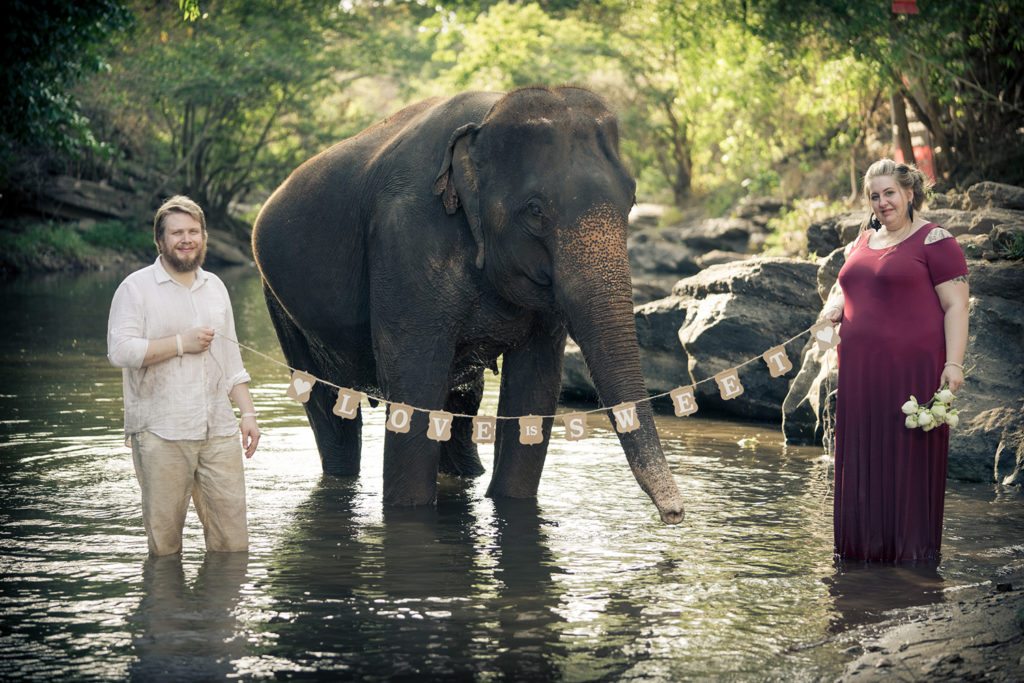
Nepal – My First Contact With Elephants
I went on an elephant safari many years before at the beginning of 2001 when I had been in Nepal . This was to try and see a tiger in the wild. This experience, although extremely exciting and downright terrifying had also left me feeling deeply uncomfortable about the treatment of the elephants. Let me explain;
Elephants were used to hunt tigers
The method to find the tiger was pretty much the same as had been used in the past when elephants were used to hunt tigers with guns. Each elephant was saddled with an iron howdah, the chair that is used to carry 2 or 3 people upon the elephant’s back. My friend and I were installed in our howdah. The mahout, the elephant handler, sat upon the elephant’s shoulders as has been the way for thousands of years. His only tool was a rather nasty looking pointed hook on a stick which he would use, relatively gently at first, on either side of the elephants head to steer it this way or that.
10 Elephants
At this point I should tell you that there were perhaps 10 elephants involved in this hunt for the wild tiger. Each carried a tourist or 2 upon its back. A mahout sat upon the shoulders of each elephant as driver. So, we set off from the camp in different directions. I was confused at this point as it hadn’t been explained as to the method that would be used to find the tiger. All we had been told was that a scout had found that a tiger had made a kill and was likely still with the corpse somewhere on the plain.
Heavy handed with the hook
So, things went along gently enough to start with and we crossed the elephant grass filled plain, a river and on to another plain. I noticed that the other elephants were now visible and we all appeared to be converging on one location from different points of the compass.
The air was filled with a deep growling sound and I immediately thought that we must be right on top of a tiger. The growling was actually coming from deep within our elephant. If elephants are worried or alarmed the growling, deep rumbling sound, is one of the signs you may notice.
Because elephants and tigers have a natural and healthy respect for one another they usually keep a respectful distance. It became increasingly necessary for the mahout to cajole the elephant and to hit it ever harder with the bull hook to continue our approach to the hidden tiger. I noticed that there was blood coming from a wound created by the hook on the top of the elephant’s head and I felt very sad and uncomfortable about this, however, by this stage we didn’t have a choice.
Lunging Tiger
The growls from our elephant and all the other elephants seemed to be getting louder and louder, the circle was drawing in to a point that one of the mahouts had identified to be a likely place for the tiger and its prey to be hiding. It was very scary indeed.
The next thing and in a lightning flash, a blurred orange and black shape lunged out of the elephant grass straight at the head of our elephant or perhaps the leg of the mahout! I don’t mind admitting that my friend and I threw ourselves backwards with swear words filling the air! Just as quickly as it happened, the moment was over. Our panic, however, took a little while longer to subside! Thankfully the tiger had decided better of mauling the elephant. The mahout, who I am sure had much experience in such matters, had whisked his leg out of harm’s way in the blink of an eye.
Ice Blue Eyes in The Elephant Grass
So, the elephants stayed on station under duress. We got to see the tiger with the carcass of a baby rhino, now back in its lair and just visible through gaps in the elephant grass. I remember being struck by the beauty of the tiger’s ice blue eyes staring out at us. After some time we were on our way back to the camp. It had been an incredible, exhilarating and sad experience all rolled into one. On the way back we discussed the use of the hook and how it must hurt the elephants when the hook is used hard enough to draw blood. We both felt very uncomfortable about what we had seen.
My previous experience with Thai elephants, as a tourist
Fast forward 3 years and I found myself at an elephant show in Mae Rim.
The show had consisted amongst other things of;
- A demonstration of the elephants moving some very large tree trunks around. This had been their main use up until 1989 when a ban on logging came in.
- Elephants playing with a giant football, which they genuinely seemed to enjoy. They are naturally playful animals.
- Elephants painting pictures. Amazing but I found myself thinking how did they come to have those skills? I was pretty sure that it wasn’t some talent they were born with.
- Elephants sitting and walking on their hind legs as you may expect from a well-trained dog. This really didn’t feel good at all and I was 100% certain that this was not natural.
That was my experience of elephants up until the time I was asked to photograph the wedding. Up until that point there had been no elephant photography at all in my range of experiences. I think it is important background for you to know this. From those past experiences I had avoided elephant shows and any other activity with elephants right up to the point of the wedding.
Buddhist blessings and elephants in the river
So, the wedding day was upon us. I packed my gear into the back of the car and set off with my assistant to find the little temple on the edge of the jungle.
I’d been out to the resort a few days before and had met Alexa and her husband Bay who were super nice. Alexa explained to me that the resort was trying to change the model of elephant tourism. Rather than guests getting rides in howdahs, if they wanted to ride it was to be a bare back experience. Another thing that Alexa explained was that the elephants were not overworked at Chai Lai.
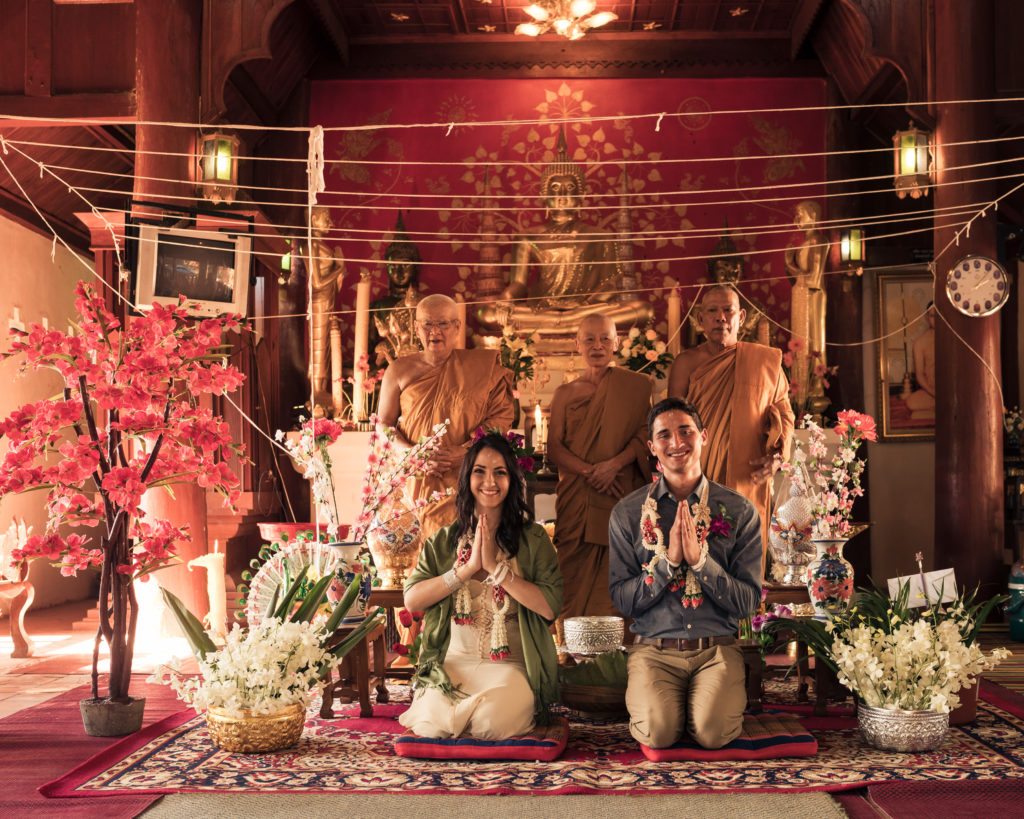
Elephant Candy
Often at camps the poor elephants are carrying tourists for up to 12 hours a day with no chance to rest or eat. A fully grown elephant needs to eat around 250kg of food a day to maintain a healthy calorie intake. You will understand that food is a very big part of an elephant’s day! The correct food for an elephant is mainly elephant grass. Bananas and sugar cane are OK and often necessary to get an elephant to co-operate. These should not be the bulk of the diet as this is the equivalent of you eating candy and chocolate all day.
At Chai Lai an experience with the elephant is usually around 90 minutes. After that the elephant hopefully gets to spend some down time in the river playing with its mahout
If there are any laws governing the length of an elephant’s working day it is hard to enforce. I am not 100% certain that one even exists at this time.
Quick fact
Elephants get in-grown toenails too
Out of interest, an elephant in the wild would walk between 8 and 16km a day to forage for food. Walking in itself is a completely natural part of the day and is actually really important as exercise. It also conditions the elephants toenails. Captive elephants that do not get to walk enough get big problems with in-grown toenails. If you see that the toenails have a nice fleshy gap between them you can ascertain the elephant is getting to walk enough.
Back to the wedding day
We had looked around for great locations to shoot and I had decided that to get the best shots I would need to get into the river. My assistant would be holding my powerful lighting rig. This ensured there was enough light on the couple from the front to counter what would be a beautiful natural back light by the sun.
When you are a wedding photographer in Chiang Mai it is really important that you understand the lighting conditions. The sun here behaves differently. For a lot of the day it is incredibly strong and almost directly overhead. Any professional photographer photographing a wedding in Chiang Mai will tell you that this is a horrible light to work with. A Chiang Mai wedding photographer will always prefer the morning or later afternoon light. Up to around 10am or so for the morning and in the afternoon from around 3pm to dusk will produce the very best light. The so called Golden Hour doesn’t last a full 60 minutes here.
We found the temple and had time to look at good photo spots outside. It wasn’t so long before the couple arrived for the blessing and I set about my craft. Sure enough we caught some lovely moments and made a few very pretty portraits of the couple outside the temple. There was a verdant green back drop to set the whole scene for their jungle temple blessing. Out of interest the wedding portraits we took outside were probably closer to midday. We bounced some light on to the couple using a large reflector because we were in a shaded area.
Elephant, wedding couple, beautiful river and light
As the couple and the wedding party awaited the minivan to arrive, the lovely old monk who had presided over the blessing in the temple came to talk to everyone. He spoke a little English and was very curious about my camera. Since this wedding I have been numerous times to the temple to act as the wedding photographer. I love to see the old monk’s large and toothless grin and to hear his chuckle.
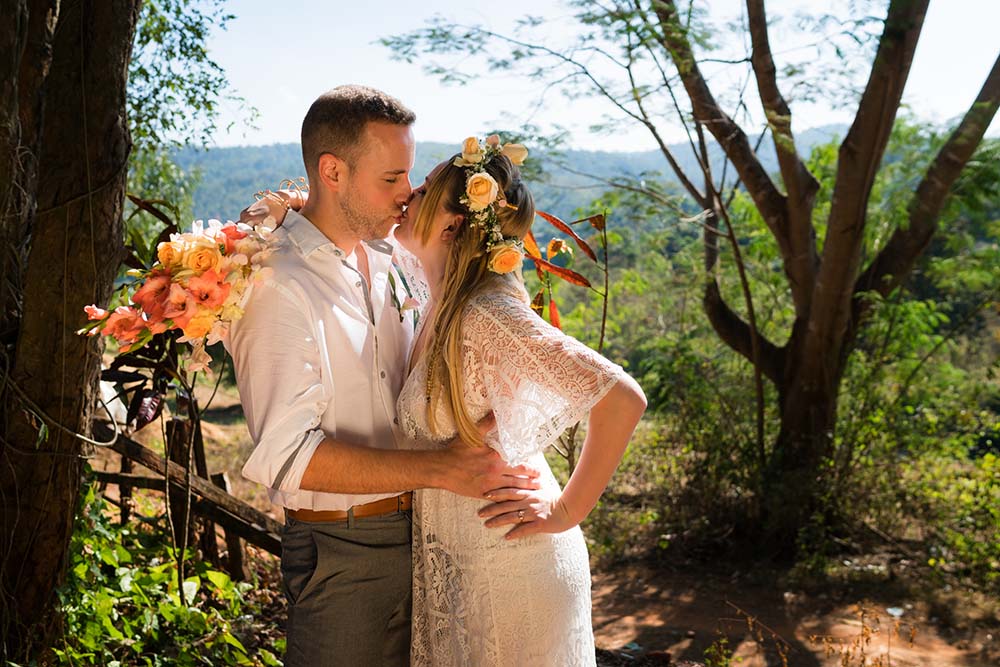
Nice To Meet you Seavoy
We followed the minivan and arrived at the same time back at Chai Lai Orchid Ecco resort. The beautiful Boho bride looked wonderful with a crown of peach and pale coloured roses and pale cream wedding dress. Her naturally blond hair gleamed in the afternoon light. Her husband, a good looking guy with large blue eyes looked lovingly at his beautiful bride.
We were introduced to Miss Seavoy, a 54 year old female elephant. She is now my preferred elephant model and I have used her in many elephant photography sessions.
Photos In The River
It wasn’t long before we were down in the Mae Wang River. My assistant cradled the Elinchrom Quadra Ranger light as she stood waist high in the water. I was only thigh deep being somewhat of a giant amongst Thais. My preferred wedding photography camera is a Sony A7Rii. My preferred lens is the Sony G-Master 24-70mm f2.8 lens. The combination of these two offer a wedding photographer the very best quality paired with the practicality of being able to zoom without having to change lens. This is particularly important when you spend a lot of time in the middle of a river! Much of my elephant photography involves joining them in the water.
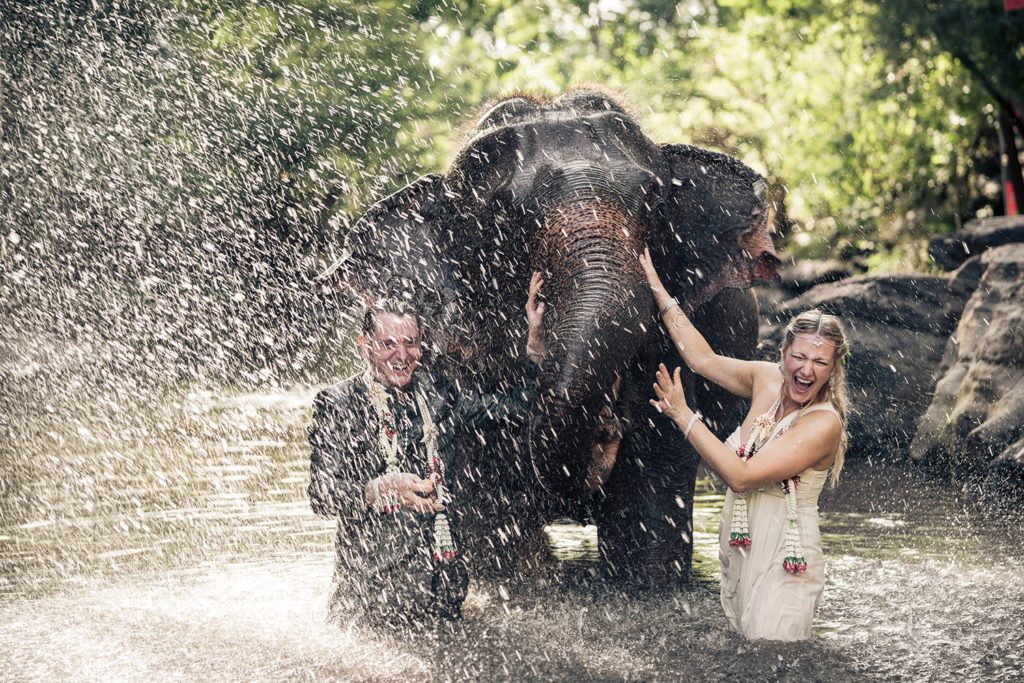
Beautiful Backlight
The sun performed brilliantly for us as it dropped behind the forest canopy. It also produced a wonderfully diffused natural backlight as a foil for my own lighting setup. The results exceeded my expectations and I was particularly pleased considering that this was my first ever elephant photography experience. The bride and groom were also delighted with the results. Client satisfaction will make any wedding photographer smile.
That day was the start of a beautiful relationship with Seavoy the elephant and Alexa and Bay. I have since had more than 30 portrait and wedding shoots at Chai Lai Orchid eco lodge. Elephant photography is my favorite kind of photo shoot these days.
My photographs are seen in Thailand, Australia, Malaysia, Hong Kong, Singapore and South Korea. In America, Canada, Columbia and Mexico. Also in France, Britain, Norway, Brazil, Sweden, Switzerland and many more.
